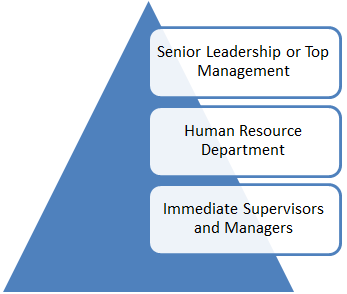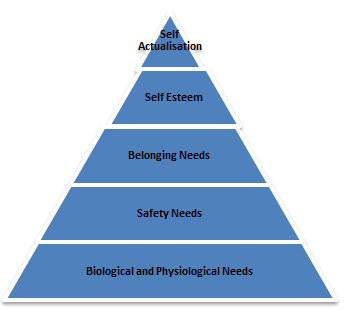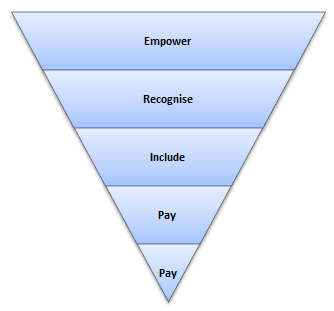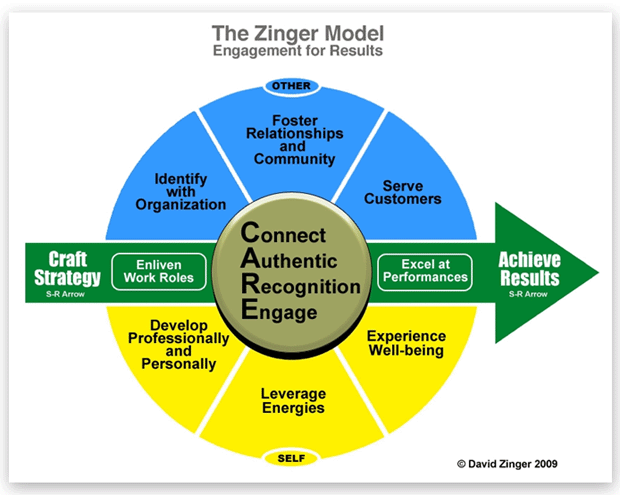1636
Employee Engagement / 3 C’s of Employee Engagement
« on: April 25, 2012, 04:50:49 PM »A major percentage of employees find their work boring. Ask HR managers about employee engagement and they have only one answer: it is the biggest challenge that we are facing today.
Days of huge increase in wages or salaries even in highly productive organisations have gone. It is unable to retain employees within the organisation for long. Due to this, the HR managers had to come up with other motivators such as offsite parties and picnics, cricket or football matches on anniversaries and birthdays, cultural festivals, painting and quiz competitions, crèches for the children of employees, Friday bashes, movie tickets and discount shopping coupons and many more.
Google, the most famous and successful technology firm provide free, healthy and well prepared food to their employees. The company appoints well qualified and experienced chefs so that their employees can relish awesome food at work. This is one of the strategies to make employees feel happy at work; however, it alone can’t retain employees for long. There have to be something else that can motivate people to being involved enthusiastically in their work. They must have an emotional attachment with their job and company.
Beyond all the above mentioned popular techniques, there are other things that play an important role in enhancing the engagement levels of employees. The proposed 3 C’s of employee engagement are career, competence and care.
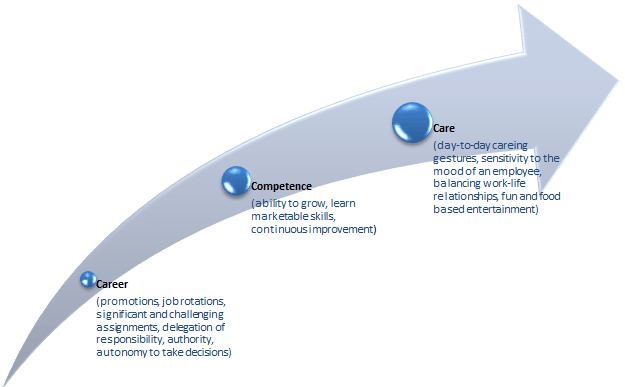
The 3 C’s of Employee Engagement
Career: When individuals join an organisation, they expect to build a career with it. If the top management and immediate managers spend dedicated time in carving out the careers of its employees, they will feel that they belong to the organisation. They feel engaged when they receive support from the management in growing their careers.
An organisation can provide its employees with opportunities to grow professionally through job rotations, indulging them in significant tasks, challenging assignments and promotions. They should also be given a specific level of authority and autonomy to take their decisions on their own. The organisations prepare an entirely new breed of employees if they genuinely invest in developing the careers of their people.
Competence: Competence is all about the ability to grow. Regular workshops and training sessions must be held in order to help employees acquire a higher level of skills and competencies. The focus should be on developing for marketable skills. Most employees after spending a few months look for competence-boosting opportunities with the organisation so that they can grow and move to the next level of their careers. While the career focuses on the actual growth in terms of designation, wages and perks and authority, competence is the ability to grow utilizing the opportunities.
Care: Sitting at the topmost, care is regarded the finest art of the managers by which they can make employees feel an indispensable part of their organisation. The managers need to be empathetic and sensitive towards people and understand their personal problems. Showing small day-to-day caring gestures towards employees make them feel that they belong to the organisation and organisation belongs to them.


